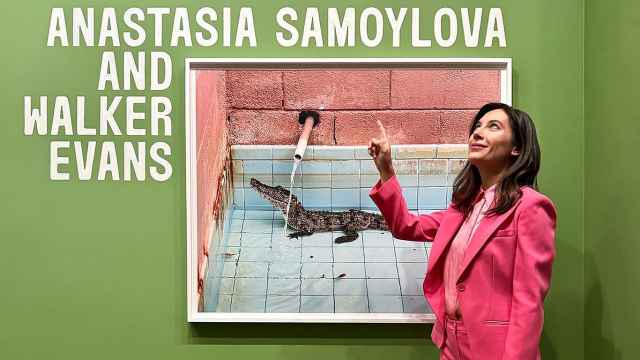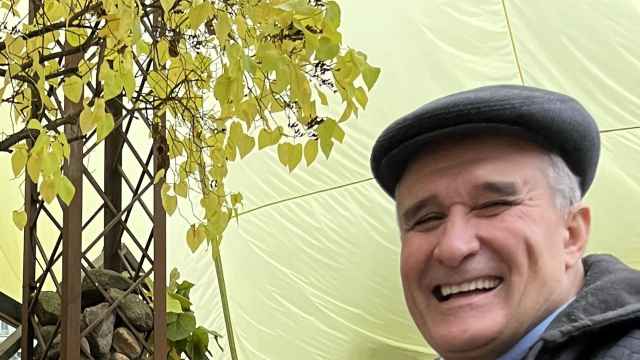My annual Moscow Times theater awards won't be published in print and online until next week but I can lift the curtain on one secret now: Gogol Center is going to be generously represented in that list.
Every once in awhile a theater comes along in Russia that lives up to the distinguished notion that theater in Russia is more than theater.
Skipping over the Moscow Art Theater, which towers over virtually every theater in the world, let me leap to a few that came into being in more recent times: the Bolshoi Drama Theater in Leningrad after it was turned over to Georgy Tovstonogov in 1956; the Sovremennik Theater, founded by a team of actors in 1957; the Taganka Theater after it was taken over by Yury Lyubimov in 1964; the Maly Drama Theater in Leningrad after it was taken over by Lev Dodin in 1982; the Playwright and Director, founded in 1998 by Alexei Kazantsev.
All of these theaters went far beyond reflecting their eras successfully. They actually established aesthetic standards and creative goals that affected everyone working around them. In short, they changed the theater of their time.
Astonishingly, I see Gogol Center doing that already and it has only been a working playhouse for five months.
Kirill Serebrennikov, one of the most popular directors to emerge in Russia over the last decade or so, was appointed to lead the old Gogol Theater 11 months ago. It was a controversial move and there was staunch opposition to it from inside and outside the theater. Serebrennikov, however, got down to the business of creating a new theater.
In place of the old single, unified troupe, Serebrennikov developed a broader concept. At present there are actually four groups working side by side at the Center — the troupe of the former Gogol Theater, Serebrennikov's former students now known as the 7th Studio, Vladimir Pankov's SounDrama Studio, and Dialogue Dance, a contemporary dance group that originated in Kostroma.
Not all the groups are working at full force yet, it would seem.
Dialogue Dance has yet to put up anything new, while Pankov moved a few of his shows originally created elsewhere to the Center. His first new show there will be "Car," a version of Yury Klavdiyev's "Let's Go, A Car is Waiting" that will premiere in September.
But the interchange of creative forces between the company of the old Gogol Theater and Serebrennikov's 7th Studio has produced some astonishing work.
Consider the numbers alone — eight new productions were mounted between the theater's gala opening on Feb. 2 and the season closer on June 30. The range of material is striking, including musical works ("Utyosov," based on songs made popular by Leonid Utyosov in the Soviet period), the Soviet absurd (Alexander Vvedensky's "Christmas at the Ivanovs"), post-Soviet prose (Viktor Yerofeyev's "Russian Beauty"), classical Russian prose (Ivan Bunin's "Mitya's Love") and European screenplays from the second half of the 20th century (Visconti's "Rocco and His Brothers," Fassbinder's "Fear Eats the Soul" and Von Trier's "The Idiots.")
Add to that the fact that Serebrennikov has enlisted a large number of directors and playwrights to share the creative load with him. This, by Russian standards, may be one of the new theater's biggest breaks with tradition. Usually a director takes over a theater and dominates it with his own vision, style and work. Serebrennikov is clearly putting his stamp on everything that happens at Gogol Center, but he is not monopolizing the creative process. He himself staged just two shows — "The Hunting of the Snark" and "The Idiots."
He oversaw the Russian debut of Latvian-born Vladislav Nastavshev, who staged two brilliant shows this year — "Mitya's Love" and "Fear." He provided an opportunity for film director Alexei Mizgiryov to make his theater debut with "Brothers." He commissioned interesting works from young directors Zhenya Berkovich ("Russian Beauty") and Denis Azarov ("Christmas at the Ivanovs").
For the European screenplay project he signed on Russian playwrights Mikhail Durnenkov, Valery Pecheikin and Lyuba Strizhak, of which only Durnenkov has an established reputation. Pecheikin and Strizhak both fly under the banner of promising writers for the future and it is pretty clear from the quality of their work at Gogol Center that, thanks to the opportunity provided by Serebrennikov, their future will come sooner than later.
Gogol Center looks like no other Russian theater. Designed by Vera Martynova and Serebrennikov, it has the feel of a night club-meets-museum-meets-cultural center. With flashy neon-lit mirrors depicting great theater directors from the past, a compact but excellent bookstore, and curated programs of concerts, lectures and discussions, the place is virtually buzzing with activity.
The audience, too, looks like no other I see in town. It's mostly young and hip, similar to audiences that frequent Teatr.doc and the Playwright and Director Center, but there is an added element that changes that entirely. This crowd comes dressed to kill.
Until now if you wanted to see women and men decked out in finery at a Moscow theater, you would go to the Lenkom or the Satirikon. Those audiences, however, tend to be older and relatively conservative. Gogol Center has tapped into a whole new demographic niche: bold, young, aesthetically adventurous individuals who are ready, willing and able to show off their command of style.
None of this, of course, would mean much if the product were not in evidence. But that is precisely what is pulling in these fascinating new crowds — cutting edge theater that speaks the language of young, demanding and intelligent spectators.
Serebrennikov steered his theater through deep, rich waters in its first few months of life. He tapped into inclinations of nostalgia for the Soviet period with "Ustyosov." He revived a work of the under-appreciated Soviet avant-garde in "Christmas at the Ivanovs." He blew down cultural obstacles by embracing three great European films as fodder for contemporary Russian problems and aesthetics. He gave a nod to pre-revolutionary and emigre culture in "Mitya's Love" and he tapped into post-Soviet sensibilities with "Russian Beauty."
And as if this wasn't enough, there was the season-closing party where young members of Gogol Center's troupe put on an astonishing concert. Drummers took over as lead singers, guitarists moved to drums, keyboard players moved to other instruments, all the while keeping up a knee-shaking, waist-wobbling concert that spanned every genre of music I can think of. They played rock, they did reggae, they crooned pop and they rapped rap. These were all actors, mind you! Turns out they're great musicians on the side.
In short, Gogol Center is simply loaded with talent, ideas and style. It already feels like the flagship theater of the current generation.
A Message from The Moscow Times:
Dear readers,
We are facing unprecedented challenges. Russia's Prosecutor General's Office has designated The Moscow Times as an "undesirable" organization, criminalizing our work and putting our staff at risk of prosecution. This follows our earlier unjust labeling as a "foreign agent."
These actions are direct attempts to silence independent journalism in Russia. The authorities claim our work "discredits the decisions of the Russian leadership." We see things differently: we strive to provide accurate, unbiased reporting on Russia.
We, the journalists of The Moscow Times, refuse to be silenced. But to continue our work, we need your help.
Your support, no matter how small, makes a world of difference. If you can, please support us monthly starting from just $2. It's quick to set up, and every contribution makes a significant impact.
By supporting The Moscow Times, you're defending open, independent journalism in the face of repression. Thank you for standing with us.
Remind me later.






